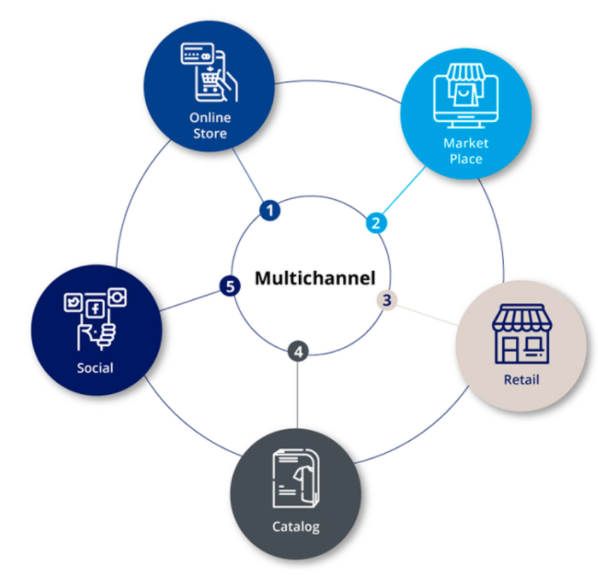Retail Cashier (1 years course)
Retail Cashier
Brief Job Description
Individuals in this position service and process all payments made in for sales done within the retail
environment whilst working cordially within the team and retail organization
.
Personal Attributes
The individual needs to be physically fit to withstand working in a retail environment whilst being customer
responsive towards service delivery and processing payments accurately with speed.
To service cash point / POS
Description
This OS describes the skills and knowledge required to service cash point / POS.
Elements and Performance Criteria

Monitor receipt practices and processes at the cash point / POS
To be competent, the user/individual on the job must be able to:
PC1. check at suitable times that staff are setting up and operating cash points correctly.
PC2. look into and promptly sort out any problems with routine cash point operations and
transactions.
PC3. check that staff are handling cash and cash equivalents efficiently and in line with approved
procedures.
PC4. accurately and promptly authorise any refunds, cheques and credit card payments which need
your authorisation.
PC5. correctly follow cash point security procedures.
PC6. develop effective plans to cope with unexpected problems at the cash point.
Knowledge and Understanding (KU)
The individual on the job needs to know and understand:
KU1. modes of payment that are accepted in the store.
KU2. problems that can arise in routine cash point operations and transactions with resolution.
KU3. company’s approved procedures for handling cash and cash equivalents, and how to follow
these efficiently.
KU4. the types of refund, cheque payment and credit card payment he/she had to authorise.
KU5. company’s cash point security procedures.
KU6. how to cope with unexpected problems at the cash point.
KU7. how to check that cash points are being correctly set up and operated
Generic Skills (GS)
User/individual on the job needs to know how to:
GS1. complete documentation accurately.
GS2. write simple reports when required.
GS3. read information accurately.
GS4. read and interpret data sheets.
GS5. follow instructions accurately.
GS6. use gestures or simple words to communicate where language barriers exist.
GS7. use questioning to minimise misunderstandings.
GS8. display courteous and helpful behaviour at all times.
GS9. make appropriate decisions regarding the responsibilities of the job role.
GS10. plan and schedule routines.
GS11. build relationships with internal and external customers.
GS12. respond to breakdowns and malfunction of equipment.
GS13. respond to unsafe and hazardous working conditions.
GS14. respond to security breaches.
GS15. calculate amounts, discounts, refunds and fractions (may also include currency conversions)
To follow point-of-sale procedures for age-restricted
products
Description
This OS describes the skills and knowledge required to follow point-of-sale procedures for age-restricted
products.

Elements and Performance Criteria
Follow procedures for sales of age-restricted products
To be competent, the user/individual on the job must be able to:
PC1. follow legal requirements and company policies and procedures for asking for proof of age.
PC2. make the sale only if customers provide age proof and it meets legal and company
conditions, while selling age-restricted products.
PC3. follow legal requirements and company policies and procedures for refusing sales.
PC4. refuse politely and firmly to make sales that are against the law or any procedures and
policies he/she must follow.
PC5. explain clearly and accurately to customers what proof of age is acceptable.
PC6. follow company procedures for telling customers how to get proof of age.
Provide service at point of sale
To be competent, the user/individual on the job must be able to:
PC7. tell customers the correct amount to be paid.
PC8. check accurately the amount and means of payment offered by the customer.
PC9. process the payment in line with company procedures, where the payment is acceptable.
PC10. tell the customer tactfully when payment cannot be approved.
PC11. record payments accurately.
PC12. store payments securely and protect them from theft.
PC13. offer additional services to the customer where these are available.
PC14. treat customers politely throughout the payment process.
PC15. balance the need to give attention to individual customers with the need to acknowledge
customers who are waiting for help
Knowledge and Understanding (KU)
The individual on the job needs to know and understand:
KU1. age-restricted products he/she is authorized to sell.
KU2. age restrictions on the products he/she is authorized to sell, and what can happen to him/her
and the company if he/she does not keep within these restrictions.
KU3. company policies and procedures for asking for proof of age, including the types of
acceptable proof.
KU4. company policies and procedures for refusing sales of age-restricted products.
KU5. how to keep cash and other payments secure.
KU6. the types of payment that he/she is authorized to receive.
KU7. the procedures for authorizing non-cash transactions.
KU8. how to deal with customers offering suspect payments.
KU9. relevant rights, duties and responsibilities of customer and self.
KU10. company procedures for taking payments.
KU11. company procedures for dealing with suspected fraud.
KU12. how to check for and identify counterfeit payments.
KU13. how to check for stolen cheque, credit cards, charge cards or debit cards.
Generic Skills (GS)
User/individual on the job needs to know how to:
GS1. complete documentation accurately.
GS2. write simple reports when required.
GS3. read information accurately.
GS4. read and interpret data sheets.
GS5. follow instructions accurately
GS6. use gestures or simple words to communicate where language barriers exist.
GS7. use questioning to minimise misunderstandings.
GS8. display courteous and helpful behaviour at all times.
GS9. make appropriate decisions regarding the responsibilities of the job role.
GS10. plan and schedule routines
GS11. build relationships with internal and external customers.
GS12. respond to breakdowns and malfunction of equipment.
GS13. respond to unsafe and hazardous working conditions.
GS14. respond to security breaches.
GS15. calculate totals, fractions, discounts, refunds and rebates accurately.
GS16. determine the impact of accepting counterfeit.
GS17. determine impact of not collecting prescribed proof.
GS18. determine impact of sales made to underage.
To process customer orders for goods
Description
This OS describes the skills and knowledge required to process customer orders for goods.
Scope
The scope covers the following :
The scope covers the following:
• Check the availability of goods for orders.
• Process orders for customers
Elements and Performance Criteria
Check the availability
To be competent, the user/individual on the job must be able to:
PC1. identify customers needs accurately by asking suitable questions.
PC2. identify the goods that will meet customers needs and check with customers that these are
satisfactory.

PC3. find out who can supply the goods needed and on what terms.
PC4. keep customers informed of progress in finding the goods they need.
PC5. give customers clear, accurate and complete information about the availability of goods and
the terms of supply.
Process orders for customers
To be competent, the user/individual on the job must be able to:
PC6. follow legal and company procedures for checking the customers identity and credit status.
PC7. follow company policy for offering to order goods the customer needs if they are not in stock.
PC8. prepare accurate, clear and complete information about the order & pass this information to
people responsible for fulfilment.
PC9. provide accurate, clear, complete and timely information to those responsible for issuing the
invoice.
PC10. tell the right person promptly when he/she cannot process an order and explain the reasons
clearly.
PC11. let the customer know promptly and politely if their order cannot be delivered within the
agreed time.
PC12. store customers details securely and show them only to people who have a right to see
them.
Knowledge and Understanding (KU)
The individual on the job needs to know and understand:
KU1. how to ask the right questions to find out exactly what customers want.
KU2. the items in stock.
KU3. how to check whether there is enough stock to meet the order.
KU4. which items are available by order and which suppliers and manufacturers can provide them.
KU5. how to check whether external suppliers and manufacturers can provide items, and on what
terms.
KU6. how to keep customers informed of progress in finding the goods they need.
KU7. how to give customers clear, accurate and complete information about the terms of supply.
KU8. legal and company procedures for checking the customers identify and credit status.
KU9. how to tell the customer promptly about any delays in fulfilling their order.
KU10. legal and company requirements relating to customer confidentiality.
KU11. who is entitled to see customer information, and in what situations.
KU12. how to invoice customers for orders.
KU13. how to escalate in case you cannot process an order.
KU14. company procedures for storing customer information securely.
Generic Skills (GS)
User/individual on the job needs to know how to:
GS1. complete documentation accurately.
GS2. write simple reports when required.
GS3. read information accurately.
GS4. read and interpret data sheets.
GS5. follow instructions accurately.
GS6. use gestures or simple words to communicate where language barriers exist.
GS7. use questioning to minimise misunderstandings.
GS8. display courteous and helpful behaviour at all times.
GS9. make appropriate decisions regarding the responsibilities of the job role.
GS10. plan and schedule routines
GS11. build relationships with internal and external customers.
GS12. respond to breakdowns and malfunction of equipment.
GS13. respond to unsafe and hazardous working conditions.
GS14. respond to security breaches.
GS15. understand the customer requirement through effective and relevant probing.
GS16. determine the impact of not maintaining customer confidentiality.
GS17. determine the impact of not being able to deliver as committed.
To process part exchange sale transactions
Description
This OS describes the skills and knowledge required to effectively process part exchange sale transactions.
Elements and Performance Criteria
Decide on the value of items offered in part exchange by customers
To be competent, the user/individual on the job must be able to:
PC1. thoroughly inspect the item being offered.
PC2. protect the item from damage while handling it.
PC3. identify accurately any repairs and cleaning needed and the costs involved.
PC4. work out the exchange value of the item accurately within company guidelines.
PC5. explain to the customer clearly and accurately the part-exchange value of the item and the
benefits of a part exchange arrangement.
PC6. tell the customer politely that the item is not acceptable for part exchange, when this
applies.
PC7. treat the customer politely throughout the valuation process.
Negotiate part exchange sales transactions with customers
To be competent, the user/individual on the job must be able to:
PC8. follow company policies and procedures for checking who owns the item.
PC9. work out accurately the balance to be paid by the customer on the item he/she wants to buy.
PC10. accept or refuse the customers offers according to company policies and the discretion
he/she is allowed.
PC11. end the transaction politely if the customer is not willing to go ahead.
PC12. explain clearly and accurately the terms and conditions of the sale.
PC13. fill in the paperwork for the transaction.
PC14. treat the customer politely throughout negotiations.
Knowledge and Understanding (KU)
The individual on the job needs to know and understand:
KU1. company policies and procedures for checking who owns the item.
KU2. what might happen if you do not check ownership properly.
KU3. terms and conditions of sale for items the store buys.
KU4. how to deal with customer objections.
KU5. how to treate customer politely during negotiations.
KU6. how to fill paperwork when buying part-exchange items.
KU7. types of payment that he/she is authorised to receive.
KU8. the procedures for authorising non-cash transactions.
KU9. how to deal with customers offering suspect payments.
KU10. company procedures for taking payments.
KU11. company procedures for dealing with suspected fraud.
KU12. how to keep cash and other payments secure.
KU13. how to check for and identifying counterfeit payments.
KU14. how to check for stolen cheques, credit cards, charge cards or debit cards.

Generic Skills (GS)
User/individual on the job needs to know how to:
GS1. complete documentation accurately.
GS2. write simple reports when required.
GS3. read information accurately.
GS4. read and interpret data sheets.
GS5. follow instructions accurately.
GS6. use gestures or simple words to communicate where language barriers exist.
GS7. use questioning to minimize misunderstandings.
GS8. display courteous and helpful behavior at all times.
GS9. make appropriate decisions regarding the responsibilities of the job role.
GS10. plan and schedule routines.
GS11. build relationships with internal and external customers.
GS12. respond to breakdowns and malfunction of equipment.
GS13. respond to unsafe and hazardous working conditions.
GS14. respond to security breaches.
GS15. evaluate the condition of the exchange.
GS16. determine the impact of not capturing all details of the exchange.
GS17. determine the impact of erroneous valuation.
To process payments
Description
This OS describes the skills and knowledge required to effectively process payments for purchases
Elements and Performance Criteria
Work out the price of customer purchases
To be competent, the user/individual on the job must be able to:
PC1. accurately identify the price of purchases.
PC2. promptly sort out any pricing problems by referring to pricing information.
PC3. seek advice promptly from the right person when he/she cannot sort out pricing problems
himself/herself.
PC4. work out accurately the amount the customer should pay.
Knowledge and Understanding (KU)
The individual on the job needs to know and understand:
KU1. how to identify and check prices in his/her own store.
KU2. how to identify current discounts and special offers.
KU3. how to seek information and advice on pricing.
KU4. company procedures for working out payments.
KU5. relevant rights, duties and responsibilities relating to the goods sold.
KU6. common methods of working out payments including point-of sale technology, electronic
calculators, Electronic Data Capture (EDC) Machines etc.
Generic Skills (GS)
User/individual on the job needs to know how to:
GS1. complete documentation accurately.
GS2. write simple reports when required.
GS3. read information accurately.
GS4. read and interpret data sheets.
GS5. follow instructions accurately.
GS6. use gestures or simple words to communicate where language barriers exist.
GS7. use questioning to minimise misunderstandings.
GS8. display courteous and helpful behaviour at all times.
GS9. make appropriate decisions regarding the responsibilities of the job role.
GS10. plan and schedule routines.
GS11. build relationships with internal and external customers.
GS12. respond to breakdowns and malfunction of equipment.
GS13. respond to unsafe and hazardous working conditions.
GS14. respond to security breaches
GS15. calculate totals, fractions, discounts, refunds and rebates accurately.
GS16. determine the impact of accepting counterfeit.
GS17. determine impact of incorrect payments received.
To process cash and credit transactions
Description
This OS describes the skills and knowledge required to effectively process cash and credit transactions.
Scope
The scope covers the following :
The scope covers the following:
• Process customer credit
• Process payments made to customer accounts
• Reconcile customer accounts
Elements and Performance Criteria
Process customer credit
To be competent, the user/individual on the job must be able to:
PC1. follow company guidelines for setting customer credit limits.
PC2. check customer accounts accurately and at suitable intervals to check that payments are up
to date.
PC3. promptly investigate reasons for missed payments and accurately record the findings.
PC4. identify customers who go over their credit limits and report the findings promptly to the
right person.
PC5. act promptly and within company guidelines to deal with customers who go over their credit
limits.
PC6. report to the right person the results of the action taken to deal with customers who go over
their credit limits
Process payments made to customer accounts
To be competent, the user/individual on the job must be able to:
PC7. check that payments from customers are valid and accurate.
PC8. record payments from customers promptly and accurately.
PC9. record clearly and accurately the reasons why payments are overdue.
PC10. identify problems accurately and sort them out promptly.
PC11. tell the right person promptly about any problems that he/she cannot sort out.
PC12. store collected payments securely and in line with company procedures.

Reconcile customer accounts
To be competent, the user/individual on the job must be able to:
PC13. check that charges made to customer accounts are correct.
PC14. check that credits made to customer accounts are correct.
PC15. identify and sort out problems with customer accounts.
PC16. tell the right person about problems with customer accounts that he/she cannot sort out or
that are beyond his/her responsibility and control.
Knowledge and Understanding (KU)
The individual on the job needs to know and understand:
KU1. the risks to the company of offering credit to customers.
KU2. company guidelines for setting customer credit limits.
KU3. how to check customer accounts effectively, including how to identify overdue payments and
customers who have gone over their credit limits.
KU4. company guidelines for managing customers who go over their credit limits.
KU5. the legal rights and obligations of customers and retailers in relation to credit.
KU6. company policies for crediting the cost of returned goods to customer accounts.
KU7. acceptable ways for customers to make payments.
KU8. company procedures for storing cash and cash equivalents securely.
KU9. types of problem that he/she is responsible for sorting out.
KU10. escalation matrix for problems that he/she cannot sort.
KU11. how to process cash and non-cash payments.
KU12. how to find out if a customer is suitable for credit.
KU13. legal tender in the country.
KU14. how to spot counterfeit payments.
KU15. how to perform accurate financial checks.
KU16. how to reconcile customer accounts accurately.
KU17. the procedures carried out by the automated billing system.
Generic Skills (GS)
User/individual on the job needs to know how to:
GS1. complete documentation accurately.
GS2. write simple reports when required.
GS3. read information accurately.
GS4. read and interpret data sheets.
GS5. follow instructions accurately.
GS6. use gestures or simple words to communicate where language barriers exist.
GS7. use questioning to minimise misunderstandings.
GS8. display courteous and helpful behaviour at all times.
GS9. make appropriate decisions regarding the responsibilities of the job role.
GS10. plan and schedule routines.
GS11. build relationships with internal and external customers.
GS12. respond to breakdowns and malfunction of equipment.
GS13. respond to unsafe and hazardous working conditions.
GS14. respond to security breaches.
GS15. calculate totals, fractions, discounts, refunds and rebates accurately
GS16. determine the impact of accepting counterfeit.
GS17. determine the impact of incorrect payments received.
To process returned goods
Description
This OS describes the skills and knowledge required to process returned goods.
Scope
The scope covers the following :
The scope covers the following:
• Help customers who need to return goods.
• Process returns of Goods
Elements and Performance Criteria
Help customers who need to return goods
To be competent, the user/individual on the job must be able to:
PC1. check clearly and politely with the customer what goods they want to return and their
reasons.
PC2. apologise promptly if the company appears to be at fault.
PC3. follow legal & company requirements for offering replacements and refunds,and explain
these to the customer clearly & politely.
PC4. explain to the customer clearly and politely the action to be taken, and any charges that
apply.
PC5. pick out accurately the replacement goods and follow company procedures for preparing
them to be sent out.
PC6. explain to the customer accurately, clearly and politely the arrangements for returning the
unwanted goods.
Process returns of goods
To be competent, the user/individual on the job must be able to:
PC7. check accurately the type, quantity and condition of returned goods.
PC8. give accurate and complete information to the person who can raise a credit note or refund
the payment.

PC9. update the stock control system promptly, accurately and fully.
PC10. label clearly any goods that are to be returned to the supplier or manufacturer.
PC11. move returned goods to the correct place and position unsaleable goods separately from
sales stock.
Knowledge and Understanding (KU)
The individual on the job needs to know and understand:
KU1. the reasons customers might have for returning goods.
KU2. customers legal rights to replacements and refunds.
KU3. company policies and procedures for replacements and refunds, including proof of purchase.
KU4. the authority he/she has to agree to replacements and refunds, and who to ask for help
when he/she needs authorisation.
KU5. how to find replacement goods.
KU6. the charges that apply when the company is not at fault.
KU7. company procedures for preparing replacement goods for sending out.
KU8. how to label goods for return to the supplier or manufacturer.
KU9. where to place returned goods that cannot be re-sold.
KU10. where to place returned goods that can be re-sold.
KU11. how to update the stock control system accurately, immediately and fully
KU12. how customers should return unwanted goods.
KU13. how to raise credit notes and refund payments.
Generic Skills (GS)
User/individual on the job needs to know how to:
GS1. complete documentation accurately.
GS2. write simple reports when required.
GS3. read information accurately.
GS4. read and interpret data sheets.
GS5. follow instructions accurately.
GS6. use gestures or simple words to communicate where language barriers exist.
GS7. use questioning to minimise misunderstandings.
GS8. display courteous and helpful behaviour at all times.
GS9. make appropriate decisions regarding the responsibilities of the job role.
GS10. plan and schedule routines.
GS11. build relationships with internal and external customers.
GS12. respond to breakdowns and malfunction of equipment.
GS13. respond to unsafe and hazardous working conditions.
GS14. respond to security breaches.
GS15. isolate and identify rational reasons for goods returned.
GS16. determine the impact of accepting all returned goods without correct reasons.
GS17. determine the impact of not updating stock control system with returned goods
GS18. determine the impact of mixing returned goods that are saleable with those to be returned
to the manufacturer.
To Maintain Health and Safety
Description
This OS describes the skills and knowledge required to maintain health and safety.
Elements and Performance Criteria
Identify and report accidents and emergencies
To be competent, the user/individual on the job must be able to:
PC1. notice and correctly identify accidents and emergencies.
PC2. get help promptly and in the most suitable way.
PC3. follow company policy and procedures for preventing further injury while waiting for help to
arrive.
PC4. act within the limits of his/her responsibility and authority when accidents and emergencies
arise.
PC5. promptly follow instructions given by senior staff and the emergency services.
Protect health and safety as you work
To be competent, the user/individual on the job must be able to:
PC6. follow company procedures and legal requirements for reducing health and safety risks as
far as possible while working.
PC7. use safety equipment correctly and in the right situations.
PC8. get advice and help from the right people when he/she concerned about his ability to work
safely.
PC9. take suitable safety measures before lifting to protect himself/herself and other people.
Lift and handle goods safely
To be competent, the user/individual on the job must be able to:
PC10. use approved lifting and handling techniques.
PC11. check that any equipment he/she needs to use is fit for use.
PC12. use lifting and handling equipment in line with company guidelines and manufacturers
instructions.
PC13. plan a safe and efficient route for moving goods.
PC14. make sure that he/she understands his/her own responsibilities when he/she asks others to
help in lifting and handling operations.
Knowledge and Understanding (KU)
The individual on the job needs to know and understand:
KU1. the types of accident and emergency that tend to happen in stores and why they happen.
KU2. getting help in the event of an accident or emergency.
KU3. action he/she can safely and usefully take while waiting for help to arrive.
KU4. health and safety risk that can arise in a store environment.
KU5. company procedures and legal requirements for reducing health and safety risks as far as
possible while working.
KU6. following health and safety procedures.
KU7. safety equipment to be used and why it is required.
KU8. what he/she can lift safely.
KU9. weight of the loads he/she has to lift.
KU10. company guidelines for not lifting more than safe loads.
KU11. planning his/her route when moving goods including the types of obstacles to look for and
how to remove or avoid them.
KU12. company guidelines and manufacturers instructions for using lifting and handling equipment.
KU13. approved techniques for safe handling and lifting.
KU14. approved procedures for using safety equipment.
Generic Skills (GS)
User/individual on the job needs to know how to:
GS1. complete documentation accurately
GS2. write simple reports when required
GS3. read information accurately
GS4. read and interpret data sheets
GS5. follow instructions accurately
GS6. use gestures or simple words to communicate where language barriers exist
GS7. use questioning to minimise misunderstandings
GS8. display courteous and helpful behaviour at all times
GS9. make appropriate decisions regarding the responsibilities of the job role
GS10. plan and schedule routines
GS11. build relationships with internal and external customers
GS12. respond to breakdowns and malfunction of equipment
GS13. respond to unsafe and hazardous working conditions
GS14. respond to security breaches
To create a positive image of self & organization in the
customer’s mind
Description
This OS describes the skills and knowledge required to create a positive image of self & organisation in the customers mind
Scope
The scope covers the following :
Establish effective rapport with customers
Respond appropriately to customers
Communicate information to customers
Elements and Performance Criteria
Establish effective rapport with customers
To be competent, the user/individual on the job must be able to:
PC1. meet the organisations standards of appearance and behaviour
PC2. greet customers respectfully and in a friendly manner
PC3. communicate with customers in a way that makes them feel valued and respected
PC4. identify and confirm customers expectations
PC5. treat customers courteously and helpfully at all times
PC6. keep customers informed and reassured
PC7. adapt appropriate behaviour to respond effectively to different customer behaviour
Respond appropriately to customers
To be competent, the user/individual on the job must be able to:
PC8. respond promptly to a customer seeking assistance
PC9. select the most appropriate way of communicating with customers
PC10. check with customers to ensure complete understanding of their expectations
PC11. respond promptly and positively to customers’ questions and comments
PC12. allow customers time to consider his/her response and give further explanation when
appropriate
Communicate information to customers
To be competent, the user/individual on the job must be able to:
PC13. quickly locate information that will help customers
PC14. give customers the information they need about the services or products offered by the
organisation
PC15. recognize information that customers might find complicated and check whether they fully
understand
PC16. explain clearly to customers any reasons why their needs or expectations cannot be met
Knowledge and Understanding (KU)
The individual on the job needs to know and understand:
KU1. organizations standards for appearance and behavior
KU2. organizations guidelines for how to recognize what customers want and respond appropriately
KU3. organizations rules and procedures regarding the methods used for communication
KU4. how to recognize when a customer is angry or confused
KU5. organizations standards for timeliness in responding to customer questions and requests for
information
Generic Skills (GS)
User/individual on the job needs to know how to:
GS1. complete documentation accurately
GS2. write simple reports when required
GS3. read information accurately
GS4. read and interpret data sheets
GS5. follow instructions accurately
GS6. use gestures or simple words to communicate where language barriers exist
GS7. use questioning to minimize misunderstandings
GS8. display courteous and helpful behavior at all times
GS9. make appropriate decisions regarding the responsibilities of the job role
GS10. plan and schedule routines
GS11. build relationships with internal and external customers
GS12. respond to breakdowns and malfunction of equipment
GS13. respond to unsafe and hazardous working conditions
GS14. respond to security breaches
To work effectively in a retail team
Description
This OS describes the skills and knowledge required to work effectively within and with teams across a
Retail environment
Scope
The scope covers the following :
Support the work team
Maintain personal presentation
Develop effective work habits
Review changes that promote continuous improvement in customer service
Elements and Performance Criteria
Support the work team
To be competent, the user/individual on the job must be able to:
PC1. display courteous and helpful behavior at all times
PC2. take opportunities to enhance the level of assistance offered to colleagues
PC3. meet all reasonable requests for assistance within acceptable workplace timeframes
PC4. complete allocated tasks as required
PC5. seek assistance when difficulties arise
PC6. use questioning techniques to clarify instructions or responsibilities
PC7. identify and display a non discriminatory attitude in all contacts with customers and other
staff members
Maintain personal presentation
To be competent, the user/individual on the job must be able to:
PC8. observe appropriate dress code and presentation as required by the workplace, job role and
level of customer contact
PC9. follow personal hygiene procedures according to organisational policy and relevant
legislation
Develop effective work habits
To be competent, the user/individual on the job must be able to:
PC10. interpret, confirm and act on workplace information, instructions and procedures relevant to
the particular task
Review changes that promote continuous improvement in customer service
To be competent, the user/individual on the job must be able to:
PC11. interpret, confirm and act on legal requirements in regard to anti- discrimination, sexual
harassment and bullying
PC12. ask questions to seek and clarify workplace information
PC13. plan and organise daily work routine within the scope of the job role
PC14. prioritise and complete tasks according to required timeframes
PC15. identify work and personal priorities and achieve a balance between competing priorities
Knowledge and Understanding (KU)
The individual on the job needs to know and understand:
KU1. the policies and procedures relating to the job role
KU2. the value system of the organization
KU3. employee rights and obligations
KU4. the reporting hierarchy and escalation matrix
KU5. ask questions to identify and confirm requirements
KU6. follow routine instructions through clear and direct communication
KU7. use language and concepts appropriate to cultural differences
KU8. use and interpret non-verbal communication
KU9. the scope of information or materials required within the parameters of the job role
KU10. the consequences of poor team participation on job outcomes
KU11. work health and safety requirements
Generic Skills (GS)
User/individual on the job needs to know how to:
GS1. complete workplace documentation accurately
GS2. read and interpret workplace documentation
GS3. read and interpret organisational policies and procedures
GS4. follow instructions accurately
GS5. use gestures or simple words to communicate where language barriers exist
GS6. use questioning to minimize misunderstandings
GS7. display courteous and helpful behavior at all times
GS8. plan and schedule time personal management
GS9. build relationships with internal and external team members
GS10. respond to ambiguity in directions and instructions
GS11. respond to breakdown in relationships within the team
GS12. respond to breakdowns in communications with other teams
To work effectively in an organisation
Description
This OS describes the skills and knowledge required to work effectively in an organisation
Scope
The scope covers the following :
Support effective team working
Help plan and organise own learning
Help others learn
Elements and Performance Criteria
Support effective team working
To be competent, the user/individual on the job must be able to:
PC1. share work fairly with colleagues, taking account of own and others preferences, skills and
time available
PC2. make realistic commitments to colleagues and do what has been promised
PC3. let colleagues know promptly if he/she will not be able to do what has been promised and
suggest suitable alternatives
PC4. encourage and support colleagues when working conditions are difficult
PC5. encourage colleagues who are finding it difficult to work together to treat each other fairly,
politely and with respect
PC6. follow the companys health and safety procedures while working
Help plan and organise own learning
To be competent, the user/individual on the job must be able to:
PC7. discuss and agree with the right people goals that are relevant, realistic and clear
PC8. identify the knowledge and skills needed to achieve his/her goals
PC9. agree action points and deadlines that are realistic, taking account of past learning
experiences and the time and resources available for learning
PC10. regularly check his/her progress and, when necessary, change the way of working
PC11. ask for feedback on his/her progress from those in a position to give it, and use their
feedback to improve his/her performance
Help others learn
To be competent, the user/individual on the job must be able to:
PC12. encourage colleagues to ask him/her for work-related information or advice that he/she is
likely to be able to provide
PC13. notice when colleagues are having difficulty performing tasks at which you are competent,
and tactfully offer advice
PC14. give clear, accurate and relevant information and advice relating to tasks and procedures
PC15. explain and demonstrate procedures clearly, accurately and in a logical sequence
PC16. encourage colleagues to ask questions if they dont understand the information and advice
given to them
PC17. give colleagues opportunities to practice new skills, and give constructive feedback
PC18. check that health, safety and security are not compromised when helping others to learn
Knowledge and Understanding (KU)
The individual on the job needs to know and understand:
KU1. teams purpose, aims and targets
KU2. responsibility for contributing to the teams success
KU3. colleagues roles and main responsibilities
KU4. the importance of sharing work fairly with colleagues
KU5. the factors that can affect own and colleagues willingness to carry out work, including skills
and existing workload
KU6. the importance of being a reliable team member
KU7. factors to take account of when making commitments, including your existing workload and
the degree to which interruptions and changes of plan are within your control
KU8. the importance of maintaining team morale, the circumstances when morale is likely to flag,
and the kinds of encouragement and support that are likely to be valued by colleagues
KU9. the importance of good working relations, and techniques for removing tension between
colleagues
KU10. the importance of following the companys policies and procedures for health and safety,
including setting a good example to colleagues
KU11. who can help set goals, help plan your learning, and give you feedback about your progress
KU12. how to identify the knowledge and skills he/she will need to achieve his/her goals
KU13. how to check his/her progress
KU14. how to adjust plans as needed to meet goals
KU15. how to ask for feedback on progress
KU16. how to respond positively
KU17. how to help others to learn in the workplace
KU18. how to work out what skills and knowledge he/she can usefully share with others
KU19. health, safety and security risks that are likely to arise when people are learning on the job,
and how to reduce these risks
Generic Skills (GS)
User/individual on the job needs to know how to:
GS1. complete documentation accurately
GS2. write simple reports when required
GS3. read information accurately
GS4. read and interpret data sheets
GS5. follow instructions accurately
GS6. use gestures or simple words to communicate where language barriers exist
GS7. use questioning to minimise misunderstandings
GS8. display courteous and helpful behaviour at all times
GS9. make appropriate decisions regarding the responsibilities of the job role
GS10. plan and schedule routines
GS11. build relationships with internal and external customers
GS12. respond to breakdowns and malfunction of equipment
GS13. respond to unsafe and hazardous working conditions
GS14. respond to security breaches







